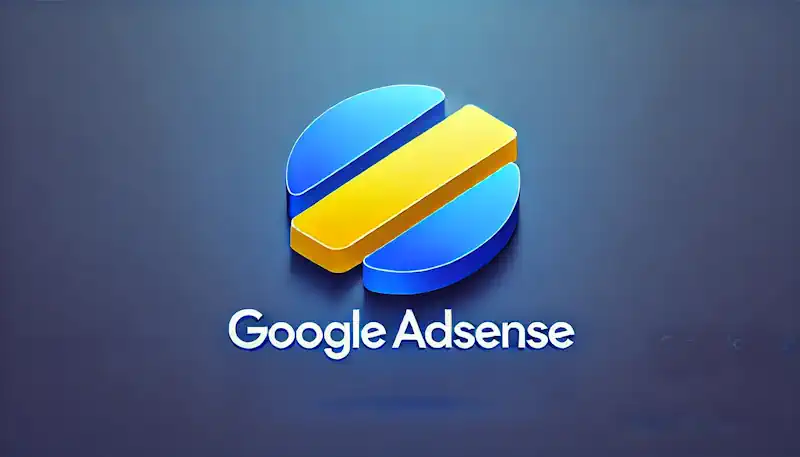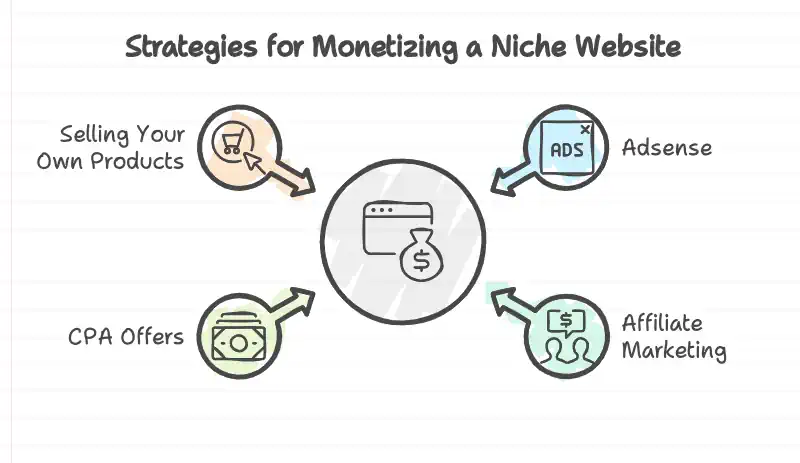By narrowing down your target market, you can craft offers that truly resonate and deliver compelling value. Moreover, with the help of strategies such as AdSense, affiliate marketing, CPA offers, and selling your own products, you can turn a small, specific audience into a profitable endeavor.

What is Niche Marketing?
Niche marketing refers to concentrating all marketing efforts on a small but specific and well-defined segment of the population. The key to niche marketing is understanding the particular needs and preferences of this narrowly defined group.
Defining Your Niche: The First Step to Success
Your first step is identifying a niche that aligns with your interests, expertise, and market needs. You might want a market free of significant competition, yet ripe with opportunities. Think beyond demographics—consider psychographics like interests, values, and lifestyle.
Why Niche Marketing is Effective
Niche marketing is effective because it allows you to focus more on your ideal customers. Instead of catering to a broad audience, you’re providing depth and specificity that appeal to a select group, resulting in higher conversion rates and customer loyalty.
Benefits of Niche Marketing
There are several benefits to honing in on a niche market:
- Less Competition: By targeting a smaller audience, you reduce the number of competitors.
- Brand Loyalty: Customers in niches often remain loyal because they value specialized products or services.
- Lower Costs: Advertising to a smaller, focused audience often requires a lower budget.
Monetization Strategies in Niche Marketing
Now let’s explore various methods to effectively reach and engage your niche market.
1. AdSense: Tapping into Google’s Advertising System
Google AdSense is an advertising program that allows you to earn money by displaying ads on your website.

With the Google AdSense program, you allow Google to place ads on your website, earning a commission whenever a visitor clicks on one. It’s not a get-rich-quick scheme, but the modest revenue AdSense generates can be useful for reinvesting in your site’s marketing or covering some of your expenses.
Signing up for an AdSense account is straightforward, and once Google approves your site, you can easily add the ads. But there’s a catch you should be aware of: when a visitor clicks on a Google ad, they’re taken away from your site, off to wherever the ad leads. This is, arguably, the biggest downside of using AdSense.
How AdSense Works
AdSense matches ads to your site based on its content and visitors. This means your audience will see ads relevant to their interests, increasing the likelihood of clicks and revenue.
| Pros | Cons |
|---|---|
| Passive income | Requires significant traffic |
| Easy to set up | Earnings can be minimal |
| Contextual relevance | Requires AdSense approval |
If you have a blog or a website with a steady stream of traffic, AdSense could be a viable option to monetize your content.
2. Affiliate Marketing: Partnering for Profit
Affiliate marketing involves partnering with companies to promote their products and earning a commission for each sale made through your referral link.
As an affiliate, your role is to champion products and services that others have created, earning a commission for your efforts. These commissions can range dramatically—sometimes a modest 1 or 2% for tangible goods, while digital offerings might yield a full 100%.
Some affiliate networks roll out the red carpet, making it almost effortless to join. Take Clickbank, for instance: a simple form, a few clicks, and you’re in. Amazon’s Associate program, on the other hand, requires a bit more, but it’s still a relatively smooth process. You will have to make 3 sales before you can use their API though.

But not all networks are so welcoming. With some, you’ll need to prove your worth, convincing them that your niche website is up to snuff, meets traffic requirements, and aligns with their marketing vision. Occasionally, you’ll even need a vendor’s explicit approval to promote their offerings.
Affiliate marketing can indeed be lucrative for niche sites, often surpassing the earnings potential of Google AdSense. Yet, it comes with a significant catch: no sales, no income.
Choosing the Right Affiliate Programs
The key to success in affiliate marketing is choosing products or services that resonate with your niche audience. Research various programs and assess their compatibility.
| Pros | Cons |
|---|---|
| No need for your own product | Reliance on third-party reliability |
| Potential for high earnings | It can become saturated |
| Variety of programs | Must comply with affiliate guidelines |
By promoting products that align with your content, you add value for your audience while also earning income.
3. CPA Offers: Cost Per Action
CPA (Cost Per Acquisition or Cost Per Action) offers are a type of affiliate marketing where you earn a commission every time someone completes a specific action, like signing up for a newsletter or filling out a form.
How CPA Offers Work
Unlike other forms of advertising, you get paid based on actions rather than clicks or impressions. This can lead to a more stable and consistent income.
| Pros | Cons |
|---|---|
| Higher commission rates | Requires compliance with guidelines |
| Performance-based | Harder to convert than pay-per-click |
| Lower risk | Need for a larger volume of traffic |
CPA offers can be particularly effective if your niche audience is highly engaged.
If you’re new to CPA, it’s worth noting that it differs from traditional affiliate marketing in a crucial way: you don’t always need to close a sale to earn a commission. Instead, a visitor to your site might only need to take a simple action—like entering their email address or zip code—to generate income for you.
CPA offers are plentiful, and it’s often fairly easy to find options that align with your niche. The real challenge, though, lies in gaining acceptance from the CPA networks themselves. They tend to be quite selective, and not every applicant makes the cut.

4. Selling Your Own Products: Direct Monetization
If you have your own products or services, selling them directly to your niche audience can be incredibly lucrative.
When you create and sell your own products, the rewards are all yours—every cent of revenue stays in your pocket, and the customer, too, is yours to keep. Unlike affiliate marketing, where you’re sharing the spotlight, having your own products firmly establishes you as an authority in your niche.
Of course, there’s a significant hurdle: the time, effort, and money required to bring your product to life. But think of it as an investment—one that, ideally, will pay off over time as you continue to make sales. If the workload feels overwhelming, remember that you can always outsource parts of the process—or even the entire thing—depending on your needs.
Sometimes, you might come across an opportunity to white-label an existing product and sell it under your own brand. However, be cautious with these offers—clarify who will handle customer service for the product: you or the original seller?
Types of Products
Your product offerings can range from digital products like eBooks and online courses to physical products such as apparel or handcrafted items.
| Digital Products | Physical Products |
|---|---|
| Low production cost | Higher production cost |
| Instant delivery | Requires inventory |
| Easy global distribution | Shipping and logistics |
By focusing on a niche, you can tailor your products specifically to address the unique needs and desires of your audience.

Additional Monetization Methods
The four methods mentioned above, Adsense, affiliate marketing, CPA offers, and selling your own products are the most common approaches to monetizing a niche website. Here are some additional strategies you might want to explore.
- Sponsored Posts and Reviews: Partner with brands to create sponsored content or product reviews. Brands often pay bloggers to write about their products or services, especially if the blog has a targeted audience that aligns with their market.
- Membership or Subscription Model: Offer premium content, exclusive articles, or resources behind a paywall. This can be through a membership site or a subscription-based model where readers pay for access to specialized content.
- Online Courses or Workshops: If your niche involves teaching or a skill, you can create and sell online courses, workshops, or webinars. Platforms like Teachable or Udemy can help facilitate this.
- Freelance Services: Offer freelance services related to your niche. For example, if your blog is about digital marketing, you could offer consulting, writing, or design services.
- Crowdfunding or Donations: Utilize platforms like Patreon, Buy Me a Coffee, or PayPal for your readers to support your blog through donations or by becoming patrons for access to exclusive content or perks.
- Paid Webinars or Live Events: Host live events, webinars, or virtual workshops and charge participants a fee to attend.
- Email Marketing: Build an email list and monetize it by sending targeted offers, promoting affiliate products, or offering exclusive content.
- Podcasting or Video Content Monetization: If you create podcasts or videos, you can monetize through sponsorships, ads, or listener/viewer donations on platforms like YouTube or through podcast-specific ad networks.
- Selling Ad Space Directly: Instead of relying on ad networks like AdSense, you can sell ad space directly to businesses that want to reach your audience. This often offers higher payouts and more control over the types of ads displayed.
These methods can be combined for diversified income streams, making your blog more resilient to changes in one particular revenue source.
Crafting Your Niche Marketing Plan
Now that you’re familiar with various strategies, it’s time to craft a comprehensive marketing plan.
Understanding Your Audience
In niche marketing, understanding your audience is paramount. Conduct thorough research including surveys, interviews, and data analysis to understand their needs, preferences, and pain points.
Creating Value-Driven Content
The cornerstone of any marketing strategy is high-quality, value-driven content. Whether it’s blog posts, videos, podcasts, or social media updates, ensure your content resonates with your audience and addresses their specific needs.

Using Social Media
Social media platforms are powerful tools for engaging with your niche audience. Platforms like Facebook, Instagram, LinkedIn, and Pinterest allow you to create communities, share content, and interact with your audience in meaningful ways.
| Social Media Platform | Best For | Tips |
|---|---|---|
| Community building | Use Facebook Groups | |
| Visual content | Leverage Instagram Stories | |
| B2B connections | Post regularly, engage with comments | |
| Visual, DIY, and lifestyle | Create themed boards |
Email Marketing: Personalized Engagement
Email marketing allows you to engage with your audience on a more personal level. By sending tailored messages, you can nurture leads, promote products, and keep your audience informed about your latest updates.
Building an Email List
Grow your email list by offering valuable content in exchange for email addresses. This could be a free eBook, webinar, or a discount code. Always ensure you have consent and comply with regulations like GDPR.
SEO: Driving Organic Traffic
Search engine optimization (SEO) plays a critical role in attracting organic traffic to your website. By optimizing your content with relevant keywords, you increase visibility in search engine results.
| SEO Best Practices | Actions |
|---|---|
| Keyword Research | Use tools like Google Keyword Planner |
| On-Page SEO | Optimize titles, headers, and meta descriptions |
| Content Quality | Provide valuable, in-depth information |
| Backlinks | Establish authority through high-quality backlinks |
Analyzing and Adjusting Your Strategy
Just as important as implementing your marketing strategies is the ongoing analysis and adjustment.
Tracking Key Metrics
Track key performance indicators (KPIs) to understand what’s working and what’s not. These could include website traffic, conversion rates, click-through rates, and customer acquisition costs.
| KPI | What it Measures |
|---|---|
| Website Traffic | Number of visitors to your site |
| Conversion Rate | Percentage of visitors who take a desired action |
| CTR (Click-Through Rate) | Percentage of users who click on a specific link or ad |
| Customer Acquisition Cost | Cost to acquire a new customer |
Making Data-Driven Decisions
Use the data you’ve gathered to make informed decisions about refining and adjusting your strategies. Whether it’s tweaking your content, changing your ad spend, or introducing new products, let data guide your choices.
Staying Flexible
The digital landscape is ever-changing. Stay flexible and be willing to adapt your strategies as needed. By keeping a pulse on industry trends and staying open to innovation, you can ensure long-term success.

Final Thoughts
By now, you should have a comprehensive understanding of monetizing your niche and the myriad strategies you can deploy to reach your specific audience. From AdSense and affiliate marketing to CPA offers and selling your own products, the options are plentiful. Remember, the key to success lies in truly understanding your niche audience and continuously providing value through targeted content and offers. It’s all about connecting with your audience in a meaningful way and offering solutions that cater specifically to their needs.
